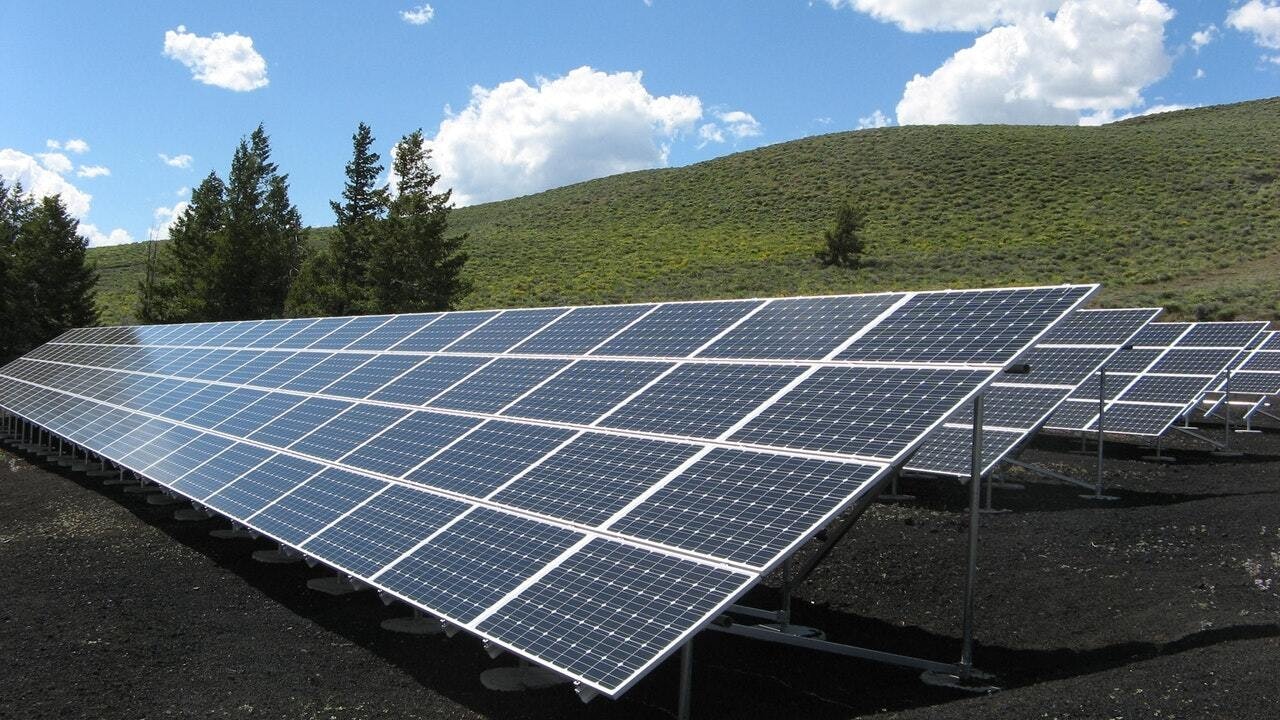Dr. Jason Bloomberg spent more than $100,000 on his home’s solar and wind energy system with the idea he could recoup the costs through energy savings during the next 20 years.
“The goal is to reduce how much power we are using from the grid,” Bloomberg said.
But his repayment schedule could be put at risk if a plan to make renewable energy system owners pay a larger share of the costs faced by electric power providers is adopted by the state.
While renewable energy system owners can generate a large portion of their yearly power needs, most are still connected to power grids for supplemental power and as backup in case of system failure.
When they generate more power than needed at their location, the surplus is transferred to the power company’s system. For that power, the customer earns credits toward his total power bill.
This billing mechanism is called “net metering” and is regulated by state statute.
A net metering proposal brought before the Legislature’s Joint Corporations, Elections and Political Subdivisions Committee on Nov. 19 could have increased Bloomberg’s timeline to recoup his system’s costs to about 84 years, he said.
“They are trying to fix something that isn’t broken,” Bloomberg said. “It’s a numbers shell game, it’s a Ponzi scheme that’s being presented by power companies, because the real competition of residential renewable energy is it’s hurting their monopoly on power production.”
While the proposal failed in a tie vote, committee Senate chair Sen. Cale Case, R-Lander, said legislators would likely continue to seek reforms in the state’s net metering policies at a later date to eliminate what he described as a subsidy for those generating their own power.
“This next session is a budget session, so I don’t think that’s the place for it,” Case said. “But, we’re going to be talking about this for a long time.”
Nickels and dimes
The debate centers around how much power customers who do not generate their own electricity have to pay compared to the costs paid by those who do have their own power generation systems.
At the Legislature’s request, the Public Service Commission’s Office of Consumer Advocate this year analyzed fixed and variable costs for three private power companies: Rocky Mountain Power, Montana Dakota Utilities and Cheyenne Light, Fuel and Power.
The results, while varied, showed customers who do not generate their own power could spend 9 to 71 cents per month more on their power bill than those with generating systems.
“This is the amount Sen. Case is going on about when he says there is a subsidy being paid by regular rate payers to net metered customers,” Bloomberg said.
For Case, the amount — no matter how small — proves net metered customers are not self-sufficient and rely on their neighbors to foot a portion of their bill.
“If nobody had net metering, there would be no cost shift, no subsidies,” Case said.
Case explained the cost shift occurs because private power companies wrap many of their infrastructure costs into the variable fees that net metering customers avoid paying by using credits earned through generation of their own power.
“In the utility industry, when you buy electricity, part of the price per kilowatt hour covers the energy,” Case explained. “But two-thirds of the amount per kilowatt hour covers fixed costs, including transmission lines, power plants and the other costs.”
Rocky Mountain Power spokesperson Spencer Hall said all the power company’s customers pay an interconnection fee, about $20 a month, but that only covers the maintenance of transmission lines, not necessarily additional infrastructure costs.
While the OCA report indicated fewer than 1,000 of the 200,000 customers served by the power companies studied used net metering, Case said that number could grow as people become more carbon conscious, increasing the potential subsidy to regular customers exponentially.
“There’s a lot of commitment here by people putting their own money on the line to make the planet a better place,” Case said. “These are very good people here. They’re very motivated. And, they really don’t believe there’s a subsidy, or if they do, they think it’s offset by them combatting carbon.”
Batteries required
Because the net metered customers are using renewable energy sources, they produce less power at night and during the winter, Case said.
“You might think net metering customers reduce cost on the system, because they are generating,” he said. “But the trouble is they don’t produce all the time.”
During those lulls, Case explained the power companies are experiencing the same problems, so they switch over to providing energy through other means, such as coal-fired power plants.
Essentially, net metered customers create a surplus of power when the company needs it least, generating credits to buy power back when it is most costly for the company to create, he said.
Bloomberg said power companies are installing more solar and wind power generation facilities, which would be counter-intuitive to Case’s peak-time usage argument.
“The reality is these industries are switching to solar and wind, because it makes financial sense,” he said. “There’s less costs associated with natural gas, solar and wind.”
According to Hall, Rocky Mountain Power is the largest renewable energy producer in the West.
“Once you build the windmill, you don’t have to pay for the wind and the sun,” he explained. “That’s a real value to our customers.”
But Hall said the company’s coal generation fleet still ramps up when needed.
“Coal generation is still an important part of our fleet,” he said. “But certainly, the future is renewables and low emissions.”
One of the reasons the power company can rely on renewable energy is the developing field of battery technology.
“Right now, battery technology is still expensive, and most folks can’t afford to incorporate that into their (net metered) system,” Hall said. “A lot of people think when they see those windmills turning, they are storing energy. That’s not the case.”
Because they can’t store the power, it is pushed onto the grid, Case said.
“When I’m producing excess electricity, the utility has to take it,” he explained. “It can’t stop it. So the utility will reduce its other sources of power, which are sometimes cheaper.”
As long as that remains the situation, Case there will be a call for net metering reforms.





